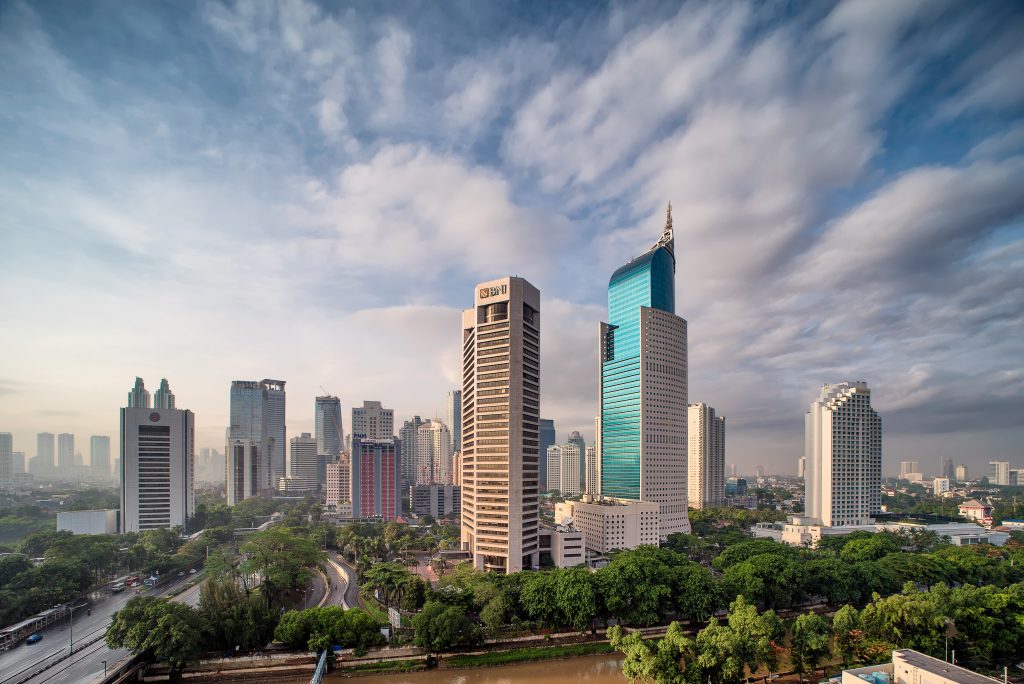Indonesia’s efforts to revive economic growth by bringing down lending rates are at risk of backfiring as they make banks the worst performers in the Jakarta Composite Index.
The Jakarta Stock Exchange Finance Index fell 5.1 percent, the most among nine industry groups, since Feb. 29 when the Financial Services Authority said it would cap deposit rates and force banks to make similar reductions to their loan rates. The regulator, known as the OJK, said the move would save banks money and encourage them to disburse more credit to spur lending growth that’s slowed to less than half the average over the last five years.
The risk is that a lack of deposits in the banking system, increasing bad loans and the prospect of narrower net-interest margins will make banks more conservative in giving out credit. This could in turn damp economic growth, which trailed estimates to slump to 4.92 percent last quarter from a year earlier. OJK Chairman Muliaman Hadad said Friday that while interest rates have come down, demand for loans remains sluggish.
“With non-performing loans rising and weak economic conditions, there is no way the banks can aggressively lend,” said John Teja, a director at PT Ciptadana Securities in Jakarta. “So the selling pressure on banking stocks will remain and the conditions of the banking industry will remain weak.”
Bad Loans
The drop in the finance gauge since Feb. 29 compares with a decline of just 0.04 percent in the JCI. PT Bank Central Asia, Indonesia’s largest lender by market value, is down 3.5 percent over the period. PT Bank Rakyat Indonesia and PT Bank Mandiri, the next-two biggest, have fallen 10 percent and 5 percent, respectively. The finance index closed up 1 percent on Wednesday, compared with a 1.3 percent gain in the JCI.
The OJK capped deposit rates at 75 to 100 basis points above Bank Indonesia’s benchmark rate, depending on the size of the lender. It asked banks to lower lending rates in line with deposit rates and said it would summon those that didn’t narrow their net-interest margins. The monetary authority’s policy rate is 6.75 percent, and it will adopt the seven-day reverse repo rate, currently at 5.5 percent, as its new benchmark in August. It isn’t yet clear if the deposit rates will be tied to the new benchmark.
Mandiri’s gross non-performing loans rose to 2.89 percent in the first quarter from 1.81 percent a year earlier. The lender has set up a special unit to anticipate worsening bad credit, the Antara news agency reported last week. BCA’s NPL rose to 1.1 percent last quarter from 0.7 percent.
There’s also not a lot of spare capacity in Indonesian banking system. The loan-to-deposit ratio was 89.6 percent in March, compared with 75.2 percent at the end of 2010, OJK data show. Lending growth was 8.4 percent in March from a year earlier, from an average of 20 percent in the five years through 2015.
High Margins
“The challenge is that banks aren’t willing to lend is because there aren’t enough deposits,” said Bharat Joshi, who helps manage $3.5 billion as head of Indonesia investments for Aberdeen Asset Management in Jakarta. “Margins will come down and banks will have to be more competitive going forward” he said, adding that he’s underweight Indonesian lenders.
The banking sector’s net-interest margin of 5.4 percent is the highest in Southeast Asia, according to a Fitch Ratings report released in March. Any measures that undermine these margins could be negative from a bank ratings perspective and, while lower lending rates will improve the competitiveness of Indonesian businesses, below-equilibrium rates could lead to inefficient investment, Fitch said.
The central bank has seen an average 57 basis-point drop in deposit rates and 22 basis-point decline in lending rates in April, Deputy Governor Perry Warjiyo told reporters in Jakarta last week. Bank Indonesia is considering loosening mortgage rules to help stoke credit growth, Senior Deputy Governor Mirza Adityaswara said in an interview on Tuesday.
The OJK is forecasting 13 percent loan growth this year, although that may be revised in June, Chairman Hadad said in an interview in Jakarta.
“Things were a bit slow in the first quarter, but that’s the normal cycle,” he said. “If we can push economic growth, loan expansion will follow.”
Sluggish Economy
Bank Indonesia lowered its full-year growth forecast last week to 5 to 5.4 percent from 5.2 to 5.6 percent. Expansion has only exceeded 5 percent in one of the last five quarters and was 4.79 percent for 2015, the least since 2009.
Rising bad loans and the sluggish economy will limit loan growth this year, although banks will get a boost if the government manages to pass its tax amnesty bill, said Jeffrosenberg Tan, an associate director at PT Sinarmas Securities in Jakarta. “Banks are more concerned about preserving their capital and keeping their loan books tidy rather than aggressively lending,” he said. Without the tax amnesty, “credit growth will remain weak as companies are still reluctant to invest and expand,” he said


